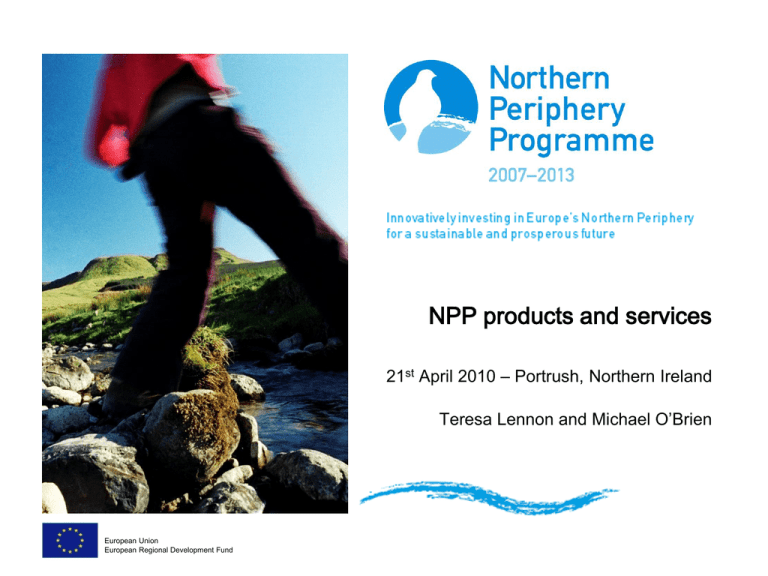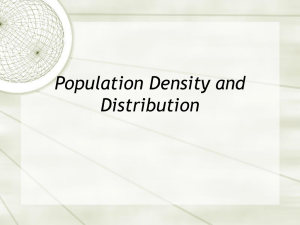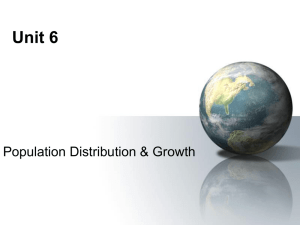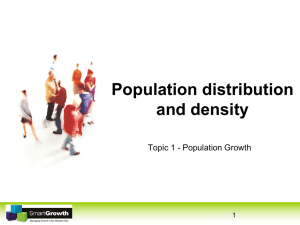NPP products and services - Northern Periphery Programme
advertisement

NPP products and services 21st April 2010 – Portrush, Northern Ireland Teresa Lennon and Michael O’Brien European Union European Regional Development Fund Discussion Points NPP definition of products and services NPP widening the definition of products and services Examples of products and services: WATER Co-Safe Appropriate partnership constellation NPP definition of Products and Services All projects should develop a tangible product or service, which is what the concept of added value refers to. Each project must make a distinctive contribution and add value by developing concrete, tangible and innovative new products or services. In programme terms, this is defined as: by working together to produce a new product that has a transnational or transregional character. by working together to produce a new service that has a transnational or transregional character. - This means to produce an item/product or to develop a service that can be used widely within the programme area and if possible beyond. - In addition to outlining the type of products or services to be developed, applicants must describe the functionality of the product or service and its future after the funding ends. NPP widening the definition of Products and Services The definition of products and services will be widened for the Sixth Call. From 3rd of February 2010, the wider definition already applies to preparatory projects. The wider definition includes in addition to the previous slide: Transfer and adaptation of existing products and services from one region into transnational or transregional solutions Update and adaptation of existing transnational or transregional products and services with additional features Warning of Algal Toxic Events, WATER Product/Service: Tailored Analytical kits for testing water on toxins on local level Establishing sample testing facilities on local level Provide training courses on the use of the different testing kits Usage of SPATT technology for toxin warnings and prediction of type of toxins Development of early warning and prediction models on intensity, duration and type of harmful events Innovation: SPATT technology New prediction model on occurrence and type of toxic event Analytical kits tailored for conditions of the shellfish industry in NPP area Local test centres; results within 24 hours, less disruption of shellfish harvest Provision of chemical testing methods instead of common biological tests Warning of Algal Toxic Events, WATER Knowledge transfer: Earlier projects funded by FP 6 and INTERREG NW Europe Planned connections to i.e. UNESCO project in harmful algal blooming Direct involvement of SMEs in development and implementation of products and services planned Organisational learning and partnership constellation: Marine Science Institutes, Fisheries Laboratories, Universities, Interest organisation, representing 43 companies involved in fish processing and shellfish growing Transnational impact: New approaches to efficient and sustainable management of natural resources in Norway, Scotland, Faroe Islands, Ireland Clearly addressing issues of remote coastal areas in the NPP region Development of surveillance systems to supervise marine ecosystems and toxic alleges; Products and services to be developed transnational and made available across the region Cooperation for Safety in Sparsely Populated Areas, Co-safe Product/Service: Movable mattresses with integrated patient covering Tents for patients temporary shelters GPS based satellite location and communication and alarm systems and GPS tagged rescue equipment Training packages for rescue personnel and tourism industry/ patients protection Transport and logistics Common working methods nationally and internationally Innovation: New enhanced safety products and services covering different perspectives and the full spectrum from scene of the accident via- pre-hospital care to full hospital care, suitable for the special conditions in NPP area (harsh climate, sparsely populated) Cooperation for Safety in Sparsely Populated Areas, Co-safe Knowledge transfer: Based on knowledge from project in INTERREG IIIB NPP and Barents Rescue Interactive VR-based training simulators for collaborative international accidents and disaster management and steering Organisational learning and partnership constellation: Hospitals, Universities, Rescue Services, Research Institutes, Municipalities Transnational impact: Joint NPP strategy for increased safety in sparsely populated areas Risk analysis for international purposes International preparedness service solution for major traffic and aircraft accidents in sparsely populated areas Cooperation for Safety in Sparsely Populated Areas, Co-safe Product/Service: Movable mattresses with integrated patient covering Tents for patients temporary shelters GPS based satellite location and communication and alarm systems and GPS tagged rescue equipment Training packages for rescue personnel and tourism industry/ patients protection Transport and logistics Common working methods nationally and internationally Innovation: New enhanced safety products and services covering different perspectives and the full spectrum from scene of the accident via- pre-hospital care to full hospital care, suitable for the special conditions in NPP area (harsh climate, sparsely populated) Cooperation for Safety in Sparsely Populated Areas, Co-safe Knowledge transfer: Based on knowledge from project in INTERREG IIIB NPP and Barents Rescue Interactive VR-based training simulators for collaborative international accidents and disaster management and steering Organisational learning and partnership constellation: Hospitals, Universities, Rescue Services, Research Institutes, Municipalities Transnational impact: Joint NPP strategy for increased safety in sparsely populated areas Risk analysis for international purposes International preparedness service solution for major traffic and aircraft accidents in sparsely populated areas Appropriate Partnership Constellation Apply a demand driven approach Invite partners whose main interest is close to the project aim and field of intervention Involve expert organisations and private sector partners Select a Lead Partner with the administrative capacity and experience to implement and co-ordinate a transnational project Partnerships should try to cover interests in the West-Atlantic area, the NorthAtlantic area and the Nordic countries and to encourage participation from all these different areas. Projects having pre-dominantly a cross-border character are discouraged. If appropriate Form a triple helix partnership Work in a triple helix context Projects should try to demonstrate SME involvement or at least associate with SME partners where appropriate. Thank you for listening!









